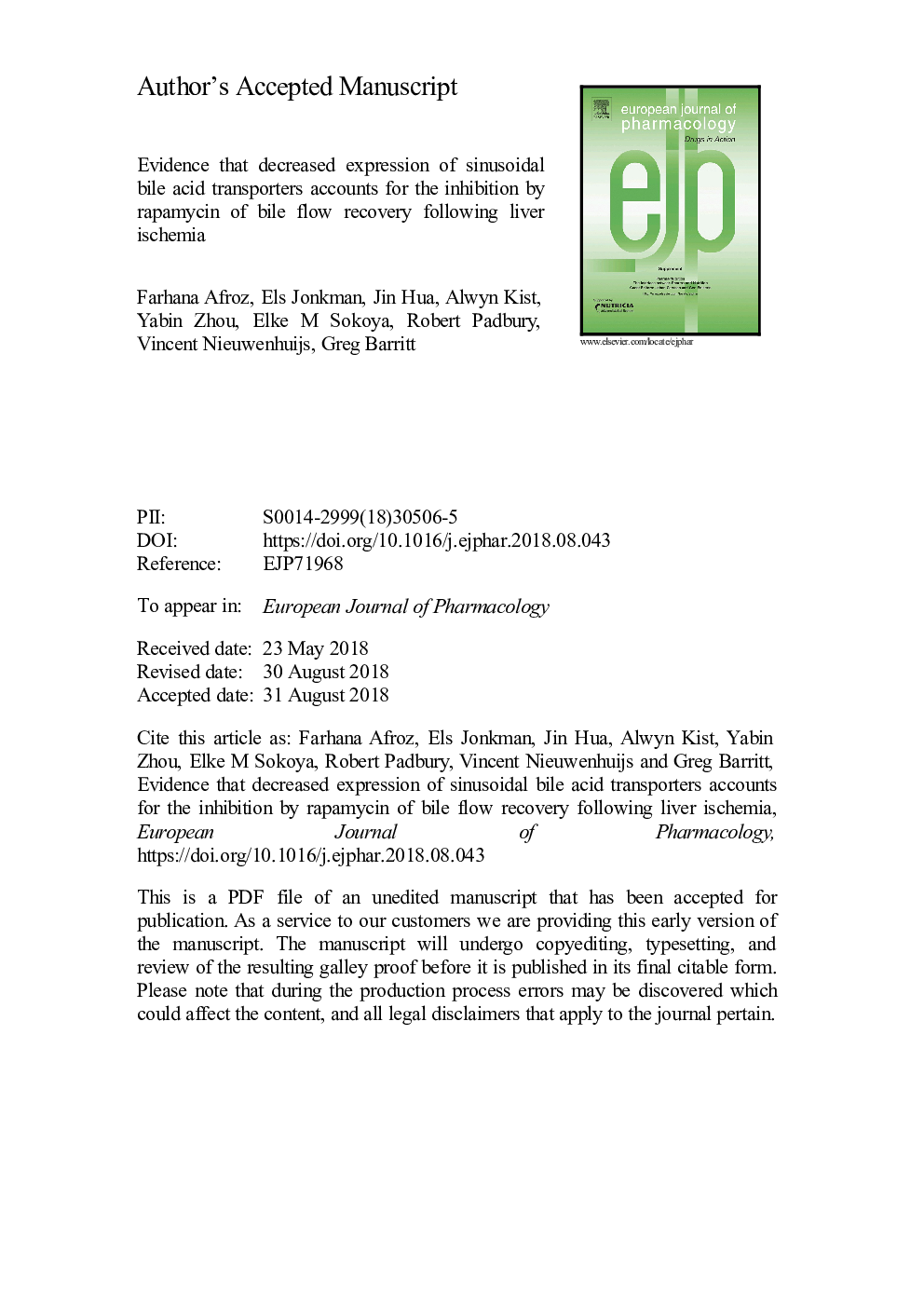| Article ID | Journal | Published Year | Pages | File Type |
|---|---|---|---|---|
| 10158436 | European Journal of Pharmacology | 2018 | 59 Pages |
Abstract
Rapamycin is employed as an immunosuppressant following organ transplant and, in patients with hepatocellular carcinoma, to inhibit cancer cell regrowth following liver surgery. Preconditioning the liver with rapamycin to induce the expression of antioxidant enzymes is a potential strategy to reduce ischemia reperfusion (IR) injury. However, pre-treatment with rapamycin inhibits bile flow, especially following ischemia. The aim was to investigate the mechanisms involved in this inhibition. In a rat model of segmental hepatic ischemia and reperfusion, acute administration of rapamycin by intravenous injection did not inhibit the basal rate of bile flow. Pre-treatment of rats with rapamycin for 24â¯h by intraperitoneal injection inhibited the expression of mRNA encoding the sinusoidal influx transporters Ntcp, Oatp1 and 2 and the canalicular efflux transporter Bsep, and increased expression of canalicular Mrp2. Dose-response curves for the actions of rapamycin on the expression of Bsep and Ntcp in cultured rat hepatocytes were biphasic, and monophasic for effects on Oatp1. In cultured tumorigenic H4IIE liver cells, several bile acid transporters were not expressed, or were expressed at very low levels compared to hepatocytes. In H4IIE cells, rapamycin increased expression of Ntcp, Oatp1 and Mrp2, but decreased expression of Oatp2. It is concluded that the inhibition of bile flow recovery following ischemia observed in rapamycin-treated livers is principally due to inhibition of the expression of sinusoidal bile acid transporters. Moreover, in tumorigenic liver tissue the contribution of tumorigenic hepatocytes to total liver bile flow is likely to be small and is unlikely to be greatly affected by rapamycin.
Related Topics
Life Sciences
Neuroscience
Cellular and Molecular Neuroscience
Authors
Farhana Afroz, Els Jonkman, Jin Hua, Alwyn Kist, Yabin Zhou, Elke M. Sokoya, Robert Padbury, Vincent Nieuwenhuijs, Greg Barritt,
